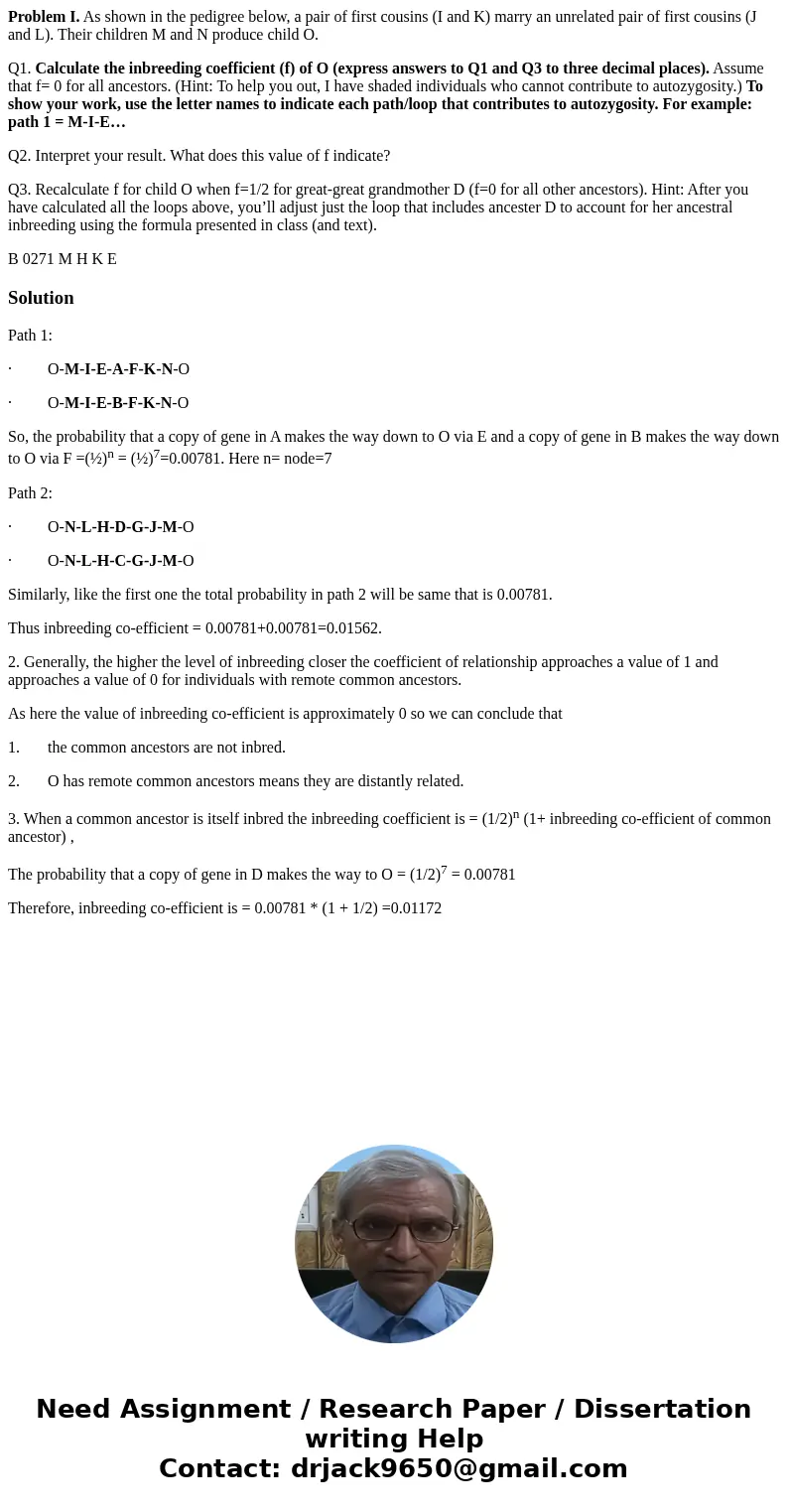Problem I As shown in the pedigree below a pair of first cou
Problem I. As shown in the pedigree below, a pair of first cousins (I and K) marry an unrelated pair of first cousins (J and L). Their children M and N produce child O.
Q1. Calculate the inbreeding coefficient (f) of O (express answers to Q1 and Q3 to three decimal places). Assume that f= 0 for all ancestors. (Hint: To help you out, I have shaded individuals who cannot contribute to autozygosity.) To show your work, use the letter names to indicate each path/loop that contributes to autozygosity. For example: path 1 = M-I-E…
Q2. Interpret your result. What does this value of f indicate?
Q3. Recalculate f for child O when f=1/2 for great-great grandmother D (f=0 for all other ancestors). Hint: After you have calculated all the loops above, you’ll adjust just the loop that includes ancester D to account for her ancestral inbreeding using the formula presented in class (and text).
B 0271 M H K ESolution
Path 1:
· O-M-I-E-A-F-K-N-O
· O-M-I-E-B-F-K-N-O
So, the probability that a copy of gene in A makes the way down to O via E and a copy of gene in B makes the way down to O via F =(½)n = (½)7=0.00781. Here n= node=7
Path 2:
· O-N-L-H-D-G-J-M-O
· O-N-L-H-C-G-J-M-O
Similarly, like the first one the total probability in path 2 will be same that is 0.00781.
Thus inbreeding co-efficient = 0.00781+0.00781=0.01562.
2. Generally, the higher the level of inbreeding closer the coefficient of relationship approaches a value of 1 and approaches a value of 0 for individuals with remote common ancestors.
As here the value of inbreeding co-efficient is approximately 0 so we can conclude that
1. the common ancestors are not inbred.
2. O has remote common ancestors means they are distantly related.
3. When a common ancestor is itself inbred the inbreeding coefficient is = (1/2)n (1+ inbreeding co-efficient of common ancestor) ,
The probability that a copy of gene in D makes the way to O = (1/2)7 = 0.00781
Therefore, inbreeding co-efficient is = 0.00781 * (1 + 1/2) =0.01172

 Homework Sourse
Homework Sourse